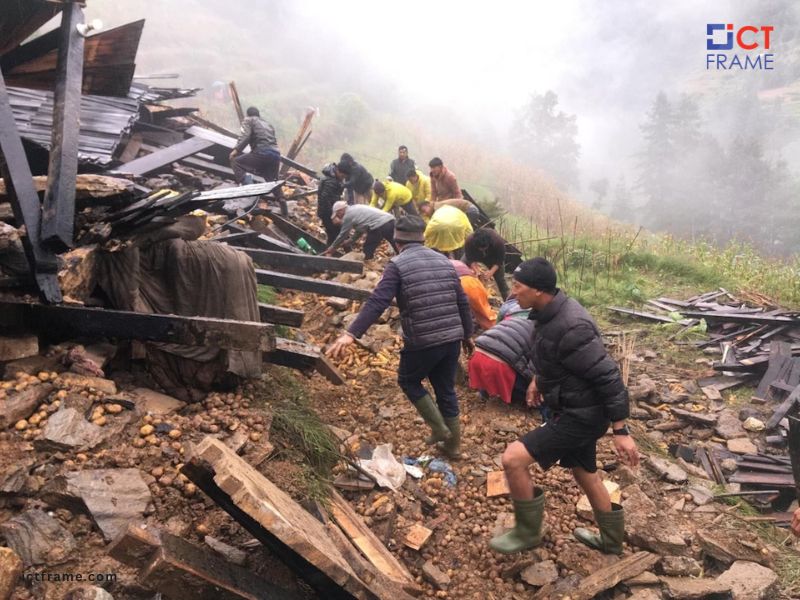Home Ministry Mobilizes Gen-Z Volunteers for Nepal Flood Relief Efforts
Nepal Flood Relief Efforts
5th October 2025, Kathmandu
The Ministry of Home Affairs (MoHA) has activated a strategic partnership with youth volunteers to address the escalating risk of floods and landslides across Nepal.
Nepal Flood Relief Efforts
As the monsoon season persists and rivers swell, MoHA is leveraging the energy of the nation’s youth. This collaboration aims to bolster Nepal Flood Relief Efforts and preparedness.
The initiative sees Gen-Z volunteers directly involved in relief operations across the Kathmandu Valley and other vulnerable areas. This partnership marks a pivotal moment, officially integrating youth movements into core national disaster management structures.
Proactive Disaster Management Strategy
The government is taking a highly proactive stance. MoHA’s move emphasizes preventive measures alongside emergency response. Instead of merely reacting to crises, the Ministry is mobilizing non-traditional resources.
Officials recognize the volunteers’ potential to reach remote areas quickly and efficiently. This strategic deployment aims to minimize potential damage and losses.
Coordination between MoHA and youth representatives ensures that assistance reaches affected residents quickly and on time.
Gen-Z on the Front Lines: A New Form of Civic Engagement
The volunteer movement is being led by prominent youth figure, Sudan Gurung. Under his guidance, hundreds of volunteers are already executing crucial groundwork.
Their work is immediately impacting community safety. The volunteers are not just distributing aid; they are engaged in essential preparatory tasks.
A key activity involves fortifying riverbanks in the Kathmandu Valley. Volunteers utilize materials to strengthen weak points before water levels peak.
This preventative work actively protects homes and infrastructure close to the river. This immediate action prevents major erosion and potential breaches.
Essential Material Distribution
Volunteers are actively managing the distribution of critical relief materials. These supplies include tarpaulins, which provide immediate shelter for families displaced by floodwaters or landslides.
Efficient logistics ensure that these materials reach the communities most in need without delay. The youth’s quick communication channels make this process highly responsive.
Crucially, the Gen-Z volunteers are also acting as a vital link to local communities. They disseminate real-time information and assist residents in vulnerable areas with evacuation.
Their presence helps ensure that residents understand and heed official warnings. Their engagement makes disaster preparedness a grassroots movement. This youth-led mobilization transforms the national response effort.
Technology and Transparency in Crisis Response
For a portal focused on Information and Communication Technology (ICT), this initiative showcases the power of digital tools in disaster management. The MoHA is coordinating heavily with the youth leadership using secure communication channels.
- Digital Coordination: Social media and secure group chats allow MoHA to dispatch tasks and receive status updates instantly. This replaces slow, traditional reporting methods.
- Public Awareness: The official promotion of real-time updates via social handles encourages public vigilance. Users are prompted to turn on notifications, creating an ad-hoc early warning system powered by citizen engagement.
- Youth-as-Data-Collectors: Volunteers use smartphones to capture and transmit geolocated damage reports and logistical needs. This allows the centralized National Disaster Risk Reduction and Management Authority (NDRRMA) to deploy resources based on verified, up-to-the-minute data.
This digital-first approach enhances transparency and speed, two elements critical to an effective emergency response.
Sustaining the Youth-Government Partnership
The long-term success of Nepal Flood Relief Efforts depends on sustaining this momentum. The collaboration demonstrates that the government acknowledges the constructive role youth can play in governance and crisis management.
By involving Gen-Z in disaster preparedness, MoHA builds a more resilient and tech-savvy response framework for the future. This move effectively channels civic energy into productive nation-building work.
The partnership sets a precedent for how Nepal utilizes its young, digitally empowered population to tackle national challenges. The focus now remains on supporting the on-the-ground work and minimizing the monsoon’s impact.
For more: Nepal Flood Relief Efforts








